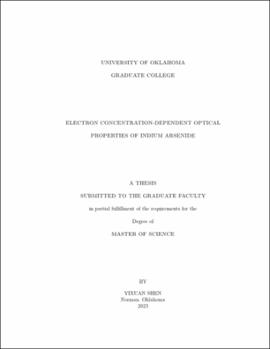| dc.description.abstract | Since humans began using mirrors to reflect light, its control has been a subject of research for thousands of years. With the use of Maxwell’s equations, we came to realize that controlling light is primarily achieved through the manipulation of the refractive index of the material.
Both the real and imaginary parts of the refractive index represent the important optical properties of a semiconductor material. In semiconductors, especially narrow bandgap materials such as InAs, their refractive indices can be significantly modified through manipulation of the material’s electron concentration. This has been explored in the development of mid-infrared semiconductor lasers such as quantum and interband cascade lasers (ICLs), which are gaining more and more attention for many applications. Hence, it is important to appropriately evaluate the electron concentration-dependent refractive index in semiconductor materials, which depends on the band structure of the material, for the various semiconductors utilized in such structures.
Previously, many researchers used a simplified two-band K · P method to calculate the refractive index of semiconductor materials. However, the results obtained from this two-band model were not systematically compared with other competing models. In this thesis, both a three-band model that includes the spin- orbit split-off band, and the two-band model are used to evaluate the refractive index and compared with experimental results to assess their suitability for three scenarios including plasmon waveguide for ICL, high contrast distributed Bragg reflector(DBR) and reflection measurement.
The results provide a guideline for selecting the appropriate model over different wavelength and carrier concentration ranges for various applications. For a carrier concentration ranging from 10^18cm−3 to 3 × 10^19cm−3, the three-band model is more accurate. For carrier concentration larger than 3 × 10^19cm−3, the two-band model is more accurate. The experimental data also shows some limitations for K · P method. The attained results may contribute to the optimization of ICL performance and help other applications like meta-material, resulting in improved device performance and more accurate measurements. | en_US |
